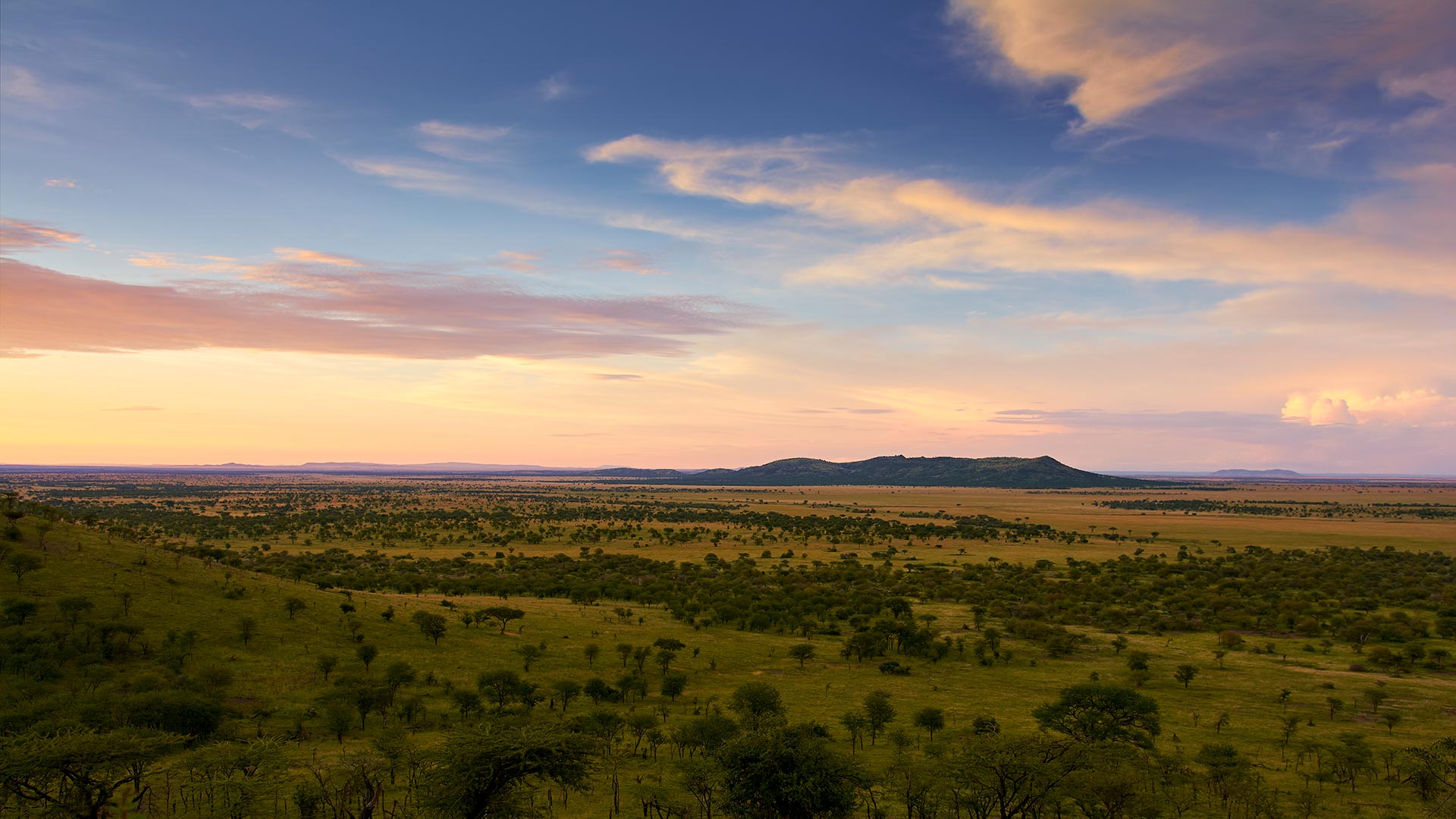
Find adventure in Ghana’s landscape and wildlife
From unspoiled rainforest, winding waterways, and open savannas, Ghana offers visitors a wealth of majestic natural landscapes and wildlife to discover.

Travelers in Ghana can experience almost every climate that West Africa has to offer. From the coastal plains of the Atlantic coast lined with sunny beaches and mangrove swamps to the plains and low plateaus of the west covered in tropical rainforest, and the arid savanna and grasslands of the north.
From biking to hiking, canopy trails to wildlife spotting and activities in the country’s verdant waterways, Ghana’s varied natural landscape offers adventure-seeking travelers plenty to explore.
Hike the hills
To the east of the country, Mount Afadja—widely defined as Ghana’s tallest peak at 885m—offers hikers sweeping views over Lake Volta and into neighboring Togo. Visitors can arrange guided ascents along the forested trails from a community tourism office at the nearby village of Liati Wote. The shortest but steepest route to the summit climbs 350m over 2km and walkers can expect to see monkeys, birds, and butterflies along the way.
For more adventurous trekkers, an overnight hike can be arranged, which continues on from Afadja to Mount Aduadu, camping at its peak before returning the next day. Another route from Liati Wote also leads walkers past coffee and cocoa farms to take a cool dip in Tagbo Falls.
In the Volta Region close to the border with Togo, Liati Wote can be reached by car from the town of Hohoe about 24km away, or from Accra, which is a four- to five-hour drive (200km).

Bike and trek through National Park
A leap further into the wilderness in the northern parts of the Volta region, Kyabobo National Park is an under-visited part of Ghana that is well worth the effort to reach. Remote, mountainous Kyabobo is a conservation area with stunning views and well-protected wilderness that offers visitors ample opportunity for trekking and mountain biking.
From one of the many higher vantage points of Mount Dzebobo, Ghana’s second-tallest mountain peak (876m), visitors can view the ecological transition from tropical rainforest in the park’s south to open savanna in its north. Along the way, hikers can look out for some of the park’s hundreds of species of butterfly, as well as warthogs, aardvarks, baboons, red river hogs, and rock hyrax.
The park’s headquarters in nearby Nkwanta rents out mountain bikes to tackle the rugged terrain, as well as guides to the seven trails that include a five-hour hike up to a 60m waterfall, and another that leads to a remote “hanging village” in the park’s Breast Mountains.
Trotros—shared minibuses—are available from Accra (expect around seven hours for the journey), Hohoe, and Tamale (with a change at Bimbila). Local taxis may be available for the 5km from the main road to the visitor’s center.
Canopy trails and wildlife spotting
More easily accessible, Kakum National Park is Ghana’s largest remaining tract of tropical rainforest and home to its oldest and most famous canopy walkway. Suspended around 40m above the forest floor, this 350m-long construction of rope bridges leads visitors through Kakum’s towering rainforest canopy, which includes centuries-old trees, flowering orchids, and ferns. From this vantage point, visitors can spot spectacular forest birds like the yellow-casqued wattled hornbill and great blue turaco.
A longer guided walk gives visitors the chance to see a wider variety of wildlife on the forest floor below. Kakum is home to dozens of mammal species, including spot-nosed monkeys, antelope, and forest elephants.
One of Ghana’s most visited attractions, the park is around four hours west of Accra by car or minibus and has a well-built infrastructure, including a visitor center and on-site restaurant as well as souvenir shops. There is even a treehouse where guests can stay overnight.

Water activities in the Volta
Stretching across the southeast of the country, the Volta is Ghana’s main river system that flows from the Bobo-Dioulasso highlands of Burkina Faso and divides into three main parts: the Black Volta, the White Volta, and the Red Volta. The river was dammed in the 1960s for the generation of hydroelectricity, creating Lake Volta—one of the world’s largest artificially-created lakes.
Now, the Volta rivers and lake offer visitors a range of accommodation and water-based adventures, including music cruises, sailing, canoeing, fishing, and water skiing or wakeboarding. The beaches of the Volta Estuary are among the best in Ghana, and visitors can see crocodiles and marine turtles along the coast.

Unwind in botanical gardens
For a nature-based escape close to Ghana’s capital, Aburi Botanical Gardens is about an hour’s drive north of Accra. The gardens played an important role in encouraging the production of rubber and cocoa in Ghana from the late 19th century.
Today, Aburi is one of 1800 botanical gardens around the world with the primary purpose of conserving rare plant species. Visitors can learn about the origin, age, and medicinal properties of plants and relax with a picnic under the trees.
Visitors can either drive the 30km from Accra or take a minibus or trotro from Accra central, Odawna, or Madina station.
However far you want to push the adventure, Ghana has a plethora of opportunities for nature and wildlife enthusiasts.

